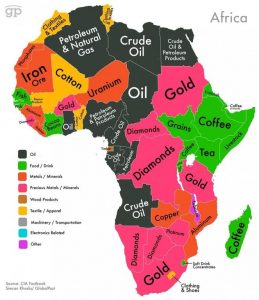Anastasiya Titarenko is a rising Junior pursuing a Bachelor’s Degree in Religious Studies and minoring in Educational Studies. She is currently living in Accra, Ghana, and will be spending the next six months traveling to Ukraine, Italy, and New Zealand.
“YOU’RE going to AFRICA?!”
“Wow, I’ve always wanted to go to Africa and help the poor.”
“Where is Ghana?”
“Are you going to go on a safari? You better send me pictures.”
There are just a few of the responses I received when people heard that I would be spending five weeks in Accra, Ghana this summer. Americans (and perhaps Westerners in general) have earned a reputation for not being very conscientious of the world, and are said to consider the continent of Africa to be one homogenous entity plagued with poverty, AIDS, and the animals seen in The Lion King. This phenomenon is commonly referred to as “the misrepresentation of Africa,” and is argued by scholars to be the result of twisted literature (i.e. Heart of Darkness by Joseph Conrad), television, journalism, and other forms of media.
If you would like to read more about this “misrepresentation,” I encourage you to Google it. You will find many TED Talks, dissertations, and op-eds on this topic. I, however, would like to explore it from a different (perhaps more unpopular) angle.
To represent something is to reproduce it in a different form. Take, for example, a geographic map, which seeks to reproduce a specific place. Imagine, for a moment, that you were planning to take a self-guided walking tour of Chicago and you needed a map. What would a “good map” look like for this occasion? To start, it would have to be a map of Chicago. It would have to be a convenient size for me to carry around and refer to while walking. It would probably have streets labeled, museums, monuments, and historic places indicated, and perhaps a few good places to eat marked.
These characteristics make it a “good map” only because they serve my interest: they represent the geographic location in a way that helps me navigate the area. The cartographer responsible for the creation of this “good map” – just like any person tasked with the representation of any thing, in any form – must choose what they include and exclude from their representation. Not every tree, blade of grass, stop sign, or house can be included.
If a “misrepresentation” is an inaccurate depiction of something that exists in the world, then to not misrepresent something is virtually impossible. Just like a cartographer developing a map, choices must be made about what to include and exclude in every piece of media.
What is fascinating, then, is that not every piece of media is classified as a “misrepresentation.” I would like to venture to say, then, that the classifier “misrepresentation” is used only when something is represented in a way that does not serve the classifiers interests. It would be like the map for a self-guided walking tour of Chicago lacking street names: it is still a map of Chicago; it just doesn’t look like what you want it to look like.
All of that being said, I am not advocating for everyone to repress their gut-reactions and merely shrug their shoulders when a piece of media represents something in a way they do not agree with. Rather, we should pay attention to these reactions and consider why we have them – consider the institutions we have been a part of and the media we have digested that has impacted our perceptions. Finally, we must consider what our responsibility is in the representations we manufacture.
Whether it is an article about Africa or a map of Chicago, every representation brings with it a set of consequences (some with more at stake than others). When I wear my ‘amateur scholar of religion’ hat, I propose that we refrain from making value judgments on representations and shift our focus to the question of why some representations are considered more legitimate than others.

Regardless of whether or not something suits one’s interests is irrelevant to whether or not something is a misrepresentation. The word “misrepresentation” is generally defined as the action or offense of giving a false or misleading account of the nature of something. The “Misrepresentation of Africa” is properly described as such because the tropes, stereotypes, and prejudices affiliated with this term are consistent with the etymology of the word in which it concerns. The author would have us believe that depicting something accurately is virtually impossible, which is curious because they immediately proceed to depict the process of map making which is assumed to be accurate in order to suit their interests of making an analogy. The word(s) I believe the author is trying to use are “interpretation” and “selective perception”. A cartographer must selectively choose what to include in their map, but that does not make the map false or misleading unless something external to the map would lead you to believe otherwise as millions of people successfully use maps every day to commute. The concluding statement, “I propose that we… shift our focus to the question of why some representations are considered more legitimate than others” should rather be read as “interpretation” than “representation” since the examples given throughout the article can be evaluated through objective criteria rather than subjective experience or perception. My 2 cents is that any given interpretation must be warranted, consistent or harmonious with the nature of a thing or an intended purpose. If something does not fit this criterion then the thing should either be considered false or repurposed. Perhaps a more productive inquiry could be what are the causes and consequences of misunderstanding a particular thing or philosophizing upon epistemology and the proper role of skepticism in research.
You both are saying the same… This is a very good map that represents why outsiders for centuries have been so interested in Africa. Love to all from a Caribbean Native.